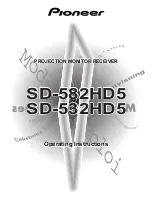
Functions
2.2 Phase Comparison Protection and Ground Differential Protection
SIPROTEC, 7SD80, Manual
E50417-G1140-C474-A1, Release date 09.2011
58
Pickup Values for Resistive or Solid Grounded, Resonant-grounded and Isolated Systems
At address
1202
87L Idyn>
you can set the dynamic tripping threshold. The value for
87L Idyn>
should be
set to at least 0.2 of the largest primary transformer rated current and larger than 2.5 to 3 times the capacitive
charging current of the line. If inductances can be connected in the protected zone (common-mode reactor or
transformers) for energized lines,
87L Idyn>
should be greater than the maximum expected inrush current.
The dynamic tripping threshold for closing is set in address
1203
87L Idyn close>
. The value for
87L Idyn
close>
should be
≥
87L Idyn>
, but it should equal at least 3 times the value of the capacitive charging
current of the protected line. If inductances are present in the protected zone (common-mode reactor or trans-
formers),
87L Idyn close>
should be set greater than the maximum expected inrush current.
The static tripping threshold is set in address
1204
87L Isteady>
. The static tripping threshold should be set
to a value that is larger than the transformer rated current plus at least 3 times the capacitive charging current
of the line. If inductances are present in the protected zone (common-mode reactor or transformers),
87L
Isteady>
must be set greater than the maximum expected inrush current.
At address
1205
87L I min
you can enter the threshold for releasing the pickup signal. The value should at
least correspond to the setting of
87L Idyn>
, but not exceed the largest transformer rated current of the con-
stellation.
Note
When using different transformers in the constellation, set identical primary setting values. The secondary
setting values can be different.
Time Delays
The trip time delay for
87L Isteady>
is set in address
1206
87L Trip Delay
.
With the inrush current detection activated, the time delay
87L Trip Delay
must be at least 20 ms for the
blocking by the inrush current detection to be effective. In resonant-grounded or isolated systems, transients
must have subsided before tripping takes place. The delay should be at least 3 cycles (60 ms at 50 Hz and
54 Ms at 60 Hz). For large systems, the time delay must be increased accordingly (see Figure 2-16).
At address
1208
87L: T EFdetect
you set the time after which an evolving fault is detected. The parameter
is disabled in resonant-grounded or isolated power systems. In the specified time, the 1-phase trip command
of the dynamic element
87L: T EFdetect
is not forwarded to the tripping logic.
Address
1207
87L Man. Close
allows you to set the behavior of the phase comparison protection for manual
closing for
87L Isteady>
. In this case, tripping can be
DELAYED
or
UNDELAYED
(see Figure 2-16).
At parameter
1214
87L:Inrush blk.
you can enable or disable the blocking function for the phase compar-
ison in case of inrush. If the parameter is enabled, tripping of the element
87L Idyn>
is generally delayed by
one cycle. Inrush blocking can thus become effective.













































